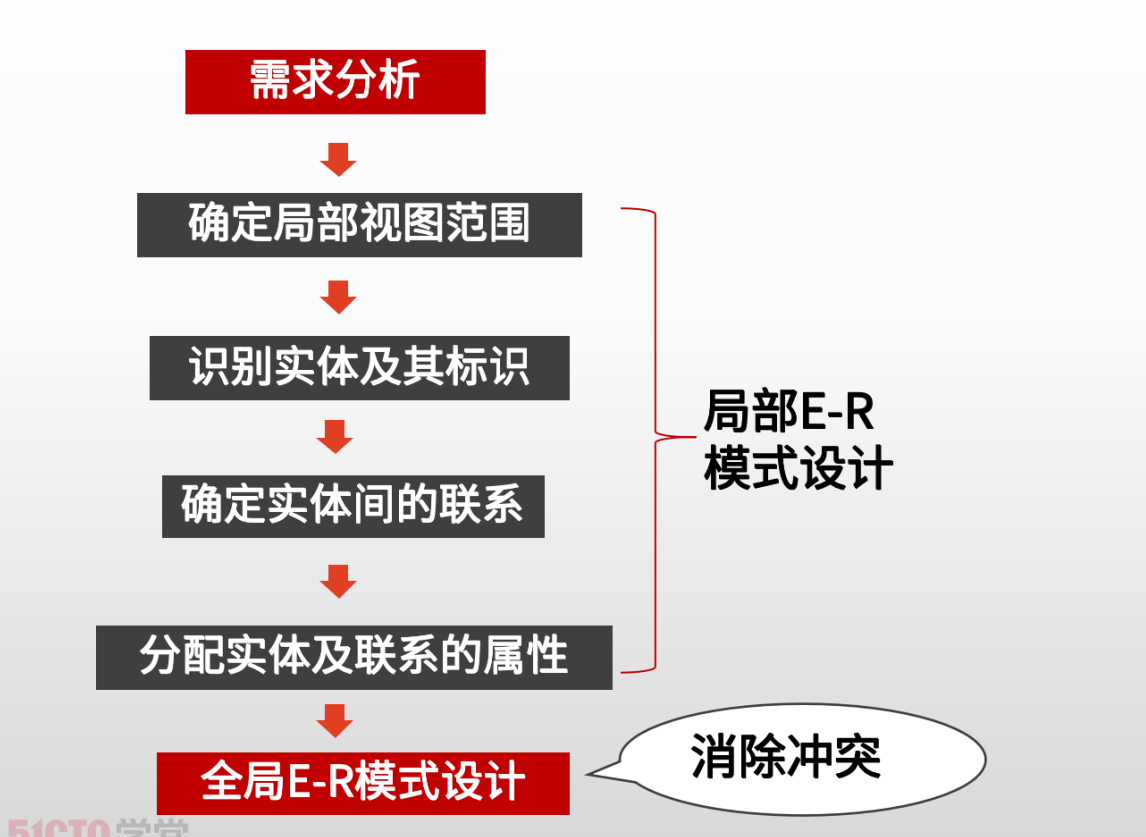本文以JFMQL100的Linux系统的AXI接口的平台驱动为例,介绍嵌入式Linux的平台驱动编写、测试软件编写以及验证方式。本文的方法适用于任意嵌入式芯片Linux的物理地址映射的平台(platform)驱动的编写、测试与应用。
本文中AXI的开始地址为0x80000000,长度为0x2000(8KB)的地址空间进行地址映射。Vivado中查看AXI的地址范围如下所示:

本文PL-PS的中断(IRQ_F2P[0]),提醒PS端进行AXI数据读取。该中断在进口ZYNQ7的中断号为61,在JFMQL100TAI的中断号为57。在Linux系统设备树配置上均需要中断号减32,即ZYNQ7的中断号配置为29,JFMQL100TAI的中断号配置为25。

1 设备树修改
在设备树的根节点添加自定义的axi驱动节点,如下所示:

2 驱动源码
1.新建axi驱动目录,如下图所示:

2.在axi驱动目录下,新建axi驱动源文件custom_axi_driver.c,驱动源文件如下所示:

#include <linux/module.h>
#include <linux/cdev.h>
#include <linux/uaccess.h>
#include <linux/kernel.h>
#include <linux/types.h>
#include <linux/fs.h>
#include <linux/device.h>
#include <linux/platform_device.h>
#include <linux/version.h>
#include <linux/io.h>
#include <linux/ioctl.h>
#include <linux/slab.h>
#include <linux/err.h>
#include <linux/of.h>
#include <linux/delay.h>#include <linux/string.h>
#include <linux/uaccess.h>#include <linux/errno.h>
#include <linux/interrupt.h>
#include <linux/init.h>#include <linux/of_address.h>
#include <linux/of_dma.h>
#include <linux/of_platform.h>
#include <linux/of_irq.h>#define DEVICE_NAME "custom_axi_driver"#define AXI_BASE_ADDR_LEN 0x4000
#define AXI_BASE_ADDR 0x80000000enum IOCTL_CMD
{CMD_GET_FPGA_VERSION = 10, //获得FPGA版本号 10CMD_GET_FPGA_TEMP , //获得FPGA温度 11CMD_READ_REG, //读axi寄存器,单个寄存器操作 12CMD_WRITE_REG //写axi寄存器,单个寄存器操作 13
};void __iomem *axi_base_addr; //ioremap映射的虚拟地址/*定义一个平台*/
typedef struct axi_struct
{int major;struct class *axi_class; //struct device *axi_class_dev; //设备struct cdev axi_cdev; //cdev 结构struct file_operations *drv_fops; //操作函数接口char axi_name[20]; //设备名称struct platform_device *pdev; //平台设备struct device_node *nd; //设备节点
}struct_axi_driver,*ptstruct_axi_driver;static dev_t dev_id; //设备编号
static int irq; //中断号static struct fasync_struct *irq_async;
//设备打开
static int custom_axi_open(struct inode *inode, struct file *file)
{printk(KERN_INFO"%s axi_open!!\n",__FUNCTION__);return 0;
}
//设备关闭
static int custom_axi_release(struct inode *inode, struct file *file)
{printk(KERN_INFO"%s axi_release!!\n",__FUNCTION__);return 0;
}
//设备写
static ssize_t custom_axi_write(struct file *flip,const char __user *buf,size_t cnt,loff_t *offt)
{unsigned int start_addr = 0;unsigned int len = 0;if(copy_from_user(&start_addr, buf, sizeof(unsigned int))){printk(KERN_ERR"%s copy_from_user is error!!\n",__FUNCTION__);return -1;}if(copy_from_user(&len, buf + sizeof(unsigned int), sizeof(unsigned int))){printk(KERN_ERR"%s copy_from_user is error!!\n",__FUNCTION__);return -1;}if(len <= AXI_BASE_ADDR_LEN){if(copy_from_user((unsigned int *)(axi_base_addr + start_addr), buf + sizeof(unsigned int)+ sizeof(unsigned int), len)){printk("%s copy_from_user is error!!\n",__FUNCTION__);return -1;}}else{printk("%s write num beyond AXI_ADDRESS_LEN!!\n",__FUNCTION__);return -1;}return len;
}
//设备读
static ssize_t custom_axi_read(struct file *flip, char __user *buf, size_t cnt, loff_t *offt)
{unsigned int start_addr = 0;unsigned int len = 0;if(copy_from_user(&start_addr, buf, sizeof(unsigned int))){printk(KERN_ERR"%s copy_from_user start_addr is error!!\n",__FUNCTION__);return -1;}if(copy_from_user(&len, buf + sizeof(unsigned int), sizeof(unsigned int))){printk(KERN_ERR"%s copy_from_user len is error!!\n",__FUNCTION__);return -1;}if(len <= AXI_BASE_ADDR_LEN){if(copy_to_user(buf + sizeof(unsigned int) + sizeof(unsigned int), (unsigned int *)(axi_base_addr + start_addr), len) != 0){printk(KERN_ERR"copy to user error!!\n");return -1;}}else{printk("%s read num beyond AXI_ADDRESS_LEN!!\n",__FUNCTION__);return -1;}return len;
}
//设备IO Control
static long custom_axi_ioctl(struct file *flip, unsigned int cmd, unsigned long arg)
{void __user *argp = (void __user *)arg;unsigned int reg_value = 0;unsigned int reg_addr = 0;switch(cmd){case CMD_GET_FPGA_VERSION://读FPGA版本号reg_value=__raw_readl(axi_base_addr);if(copy_to_user(argp,(unsigned int *)®_value ,sizeof(unsigned int))){printk("%s copy_to_user is error!!\n",__FUNCTION__);return -1;}break;case CMD_GET_FPGA_TEMP://读FPGA温度reg_value=__raw_readl((axi_base_addr + sizeof(unsigned int)));if(copy_to_user(argp,(unsigned int *)®_value ,sizeof(unsigned int))){printk("%s copy_to_user is error!!\n",__FUNCTION__);return -1;}break;case CMD_READ_REG://读axi寄存器if(copy_from_user((unsigned int *)®_addr,argp,sizeof(unsigned int))){printk("%s copy_from_user is error!!\n",__FUNCTION__);return -1;}reg_value=__raw_readl((axi_base_addr + reg_addr));if(copy_to_user(argp + sizeof(unsigned int),(unsigned int *)®_value ,sizeof(unsigned int))){printk("%s copy_to_user is error!!\n",__FUNCTION__);return -1;}break;case CMD_WRITE_REG://写axi寄存器if(copy_from_user((unsigned int *)®_addr,argp,sizeof(unsigned int))){printk("%s copy_from_user is error!!\n",__FUNCTION__);return -1;}if(copy_from_user((unsigned int *)®_value,argp+sizeof(unsigned int),sizeof(unsigned int))){printk("%s copy_from_user is error!!\n",__FUNCTION__);return -1;}__raw_writel(reg_value,(axi_base_addr + reg_addr));break;default:break;}return sizeof(unsigned int);//返回操作字节数
}
//中断
static int irq_drv_fasync (int fd, struct file *filp, int on)
{return fasync_helper (fd, filp, on, &irq_async);
}//中断触发函数
static irqreturn_t irq_interrupt(int irq, void *dev_id)
{kill_fasync (&irq_async, SIGIO, POLL_IN);return 0;
}struct file_operations axi_fops = {.owner = THIS_MODULE,.open = custom_axi_open,.release = custom_axi_release,.read = custom_axi_read,.write = custom_axi_write,.fasync = irq_drv_fasync,.unlocked_ioctl = custom_axi_ioctl
};static int custom_axi_probe(struct platform_device *pdev)
{int ret;ptstruct_axi_driver pt_axidriver = NULL;printk("axi probe start!\n");/************************************************************************ register character device ***********************************************************************/printk("axi-reg-driver: register device...\n");pt_axidriver = (ptstruct_axi_driver)kmalloc(sizeof(struct_axi_driver),GFP_KERNEL);if (pt_axidriver == NULL){printk(KERN_ERR"%s kmalloc is error!\n",__FUNCTION__);return -1;}axi_base_addr = ioremap(AXI_BASE_ADDR, AXI_BASE_ADDR_LEN);//映射本地地址if (!axi_base_addr) {printk(KERN_ERR"%s ioremap AXI_base is error!!\n",__FUNCTION__);goto error5;}pt_axidriver->pdev = pdev;platform_set_drvdata(pdev, pt_axidriver);pt_axidriver->drv_fops = &axi_fops;strcpy(pt_axidriver->axi_name,DEVICE_NAME);/*从系统获取主设备编号*/ret = alloc_chrdev_region(&dev_id, 0, 5, pt_axidriver->axi_name);if (ret < 0){printk(KERN_ERR"cannot alloc_chrdev_region!\n");goto error4;}pt_axidriver->major = MAJOR(dev_id);printk("MAJOR dev is successed!\n");cdev_init(&pt_axidriver->axi_cdev , &axi_fops); //初始化axi结构,fopsprintk("axi_cdev init!\n");if(cdev_add(&pt_axidriver->axi_cdev , dev_id, 5) != 0){printk(KERN_ERR"add axi error\n");goto error3;}printk("axi_cdev add ok!\n");pt_axidriver->axi_class = class_create(THIS_MODULE, pt_axidriver->axi_name);if(pt_axidriver->axi_class==NULL){printk(KERN_ERR"creat axi class error\n");goto error2;}printk("axi_cdev class init!\n");pt_axidriver->axi_class_dev = device_create(pt_axidriver->axi_class, NULL, MKDEV(pt_axidriver->major, 0), NULL, pt_axidriver->axi_name);if(pt_axidriver->axi_class_dev == NULL){printk(KERN_ERR"device_create is error!\n");goto error1;}printk("axi_cdev class dev init!\n");irq = platform_get_irq(pdev,0);if (irq <= 0){goto error0;}printk("system irq = %d\n", irq);//申请上升沿中断触发ret = request_irq(irq,irq_interrupt,IRQF_TRIGGER_RISING | IRQF_ONESHOT,pt_axidriver->axi_name, NULL);if (ret) {printk(KERN_ERR"irq_probe irq error!\n");goto error0;}return 0;free_irq(irq, NULL);
error0:device_destroy(pt_axidriver->axi_class,MKDEV(pt_axidriver->major, 0));
error1:class_destroy(pt_axidriver->axi_class);
error2:cdev_del(&pt_axidriver->axi_cdev); //移除字符设备
error3:unregister_chrdev_region(dev_id, 5);
error4:iounmap(axi_base_addr);//释放地址映射
error5:kfree(pt_axidriver);return -1;
}static int custom_axi_remove(struct platform_device *pdev)
{ptstruct_axi_driver pt_axidriver = (ptstruct_axi_driver)platform_get_drvdata(pdev);free_irq(irq, NULL);//释放中断device_destroy(pt_axidriver->axi_class,MKDEV(pt_axidriver->major, 0));class_destroy(pt_axidriver->axi_class);cdev_del(&pt_axidriver->axi_cdev); //移除字符设备unregister_chrdev_region(dev_id, 5); //释放设备iounmap(axi_base_addr); //释放axi虚拟地址映射kfree(pt_axidriver); //释放驱动return 0;
}/*定义,初始化平台驱动*/
static const struct of_device_id custom_axi_of_match[] = {{.compatible = "lsl,custom_axi_driver"},{},
};
MODULE_DEVICE_TABLE(of, custom_axi_of_match);
static struct platform_driver custom_axi_platform_driver = {.driver = {.name = "custom_axi_driver",.of_match_table = custom_axi_of_match,},.probe = custom_axi_probe,.remove = custom_axi_remove,
};module_platform_driver(custom_axi_platform_driver);MODULE_LICENSE("GPL");
MODULE_DESCRIPTION("lsl custom_axi_driver platform driver");
MODULE_AUTHOR("LSL");
3.在axi驱动目录下,新建Makefile文件,Makefile文件中指定内核源码路径。如下图所示:



4.在axi驱动目录下,新建编译脚本build.sh,编译脚本内容如下所示:



5.运行编译脚本,对驱动进行动态编译,生成驱动的ko文件custom_axi_driver.ko,编译结果如下所示:

3 驱动测试程序
1.新建驱动测试程序目录app_driver_test,如下图所示:

2.在驱动测试目录下,新建驱动测试软件app_driver_test.c,驱动测试源文件如下图所示:

3.在驱动测试目录下,新建驱动测试软件app_driver_test.c,驱动测试源文件如下图所示:
#include <sys/types.h>
#include <sys/stat.h>
#include <fcntl.h>
#include <signal.h>
#include <stdio.h>
#include <string.h>
#include <stdlib.h>
#include <fcntl.h>
#include <unistd.h>
#include <sys/types.h>
#include <sys/stat.h>
#include <sys/mman.h>
#include <errno.h>
#include <time.h>
#include <sys/time.h>
#include <sys/ioctl.h>
#include <pthread.h>
#include <linux/ioctl.h>
#include "app_driver_test.h"int pl_axi_fd;
static int irq_count = 0;int axi_writeReg(unsigned int reg,unsigned int value, unsigned int axi_offset_addr)
{Axi_CtrlRwStruct Axi_CtrlRwStructure;int ret;Axi_CtrlRwStructure.reg_addr=REG_ADDR(reg)+axi_offset_addr;Axi_CtrlRwStructure.reg_value=value;ret = ioctl(pl_axi_fd,CMD_WRITE_REG,&Axi_CtrlRwStructure); if(ret<0){printf("axi_writeReg addr %xis error!\n",Axi_CtrlRwStructure.reg_addr);return -1;}return ret;
}int axi_readReg(unsigned int reg,unsigned int *value,unsigned int axi_offset_addr)
{int ret=0;Axi_CtrlRwStruct Axi_CtrlRwStructure;Axi_CtrlRwStructure.reg_addr=REG_ADDR(reg)+axi_offset_addr;ret = ioctl(pl_axi_fd,CMD_READ_REG,&Axi_CtrlRwStructure); if(ret<0){printf("axi_readReg addr %xis error!\n",Axi_CtrlRwStructure.reg_addr);return -1;}*value=Axi_CtrlRwStructure.reg_value;return ret;
}int axi_GetFpga_Version(unsigned int *version)
{unsigned int buf;int ret;ret = ioctl(pl_axi_fd,CMD_GET_FPGA_VERSION,&buf); if(ret<0){printf("axi_GetFpga_Version is error!\n");return -1;}*version=buf;return ret;
}int axi_GetFpga_Temp(unsigned int *temp)
{unsigned int buf;int ret;ret = ioctl(pl_axi_fd,CMD_GET_FPGA_TEMP,&buf); if(ret<0){printf("axi_GetFpga_Temp is error!\n");return -1;}*temp=buf;return ret;
}int axi_writeData(unsigned int start_addr, unsigned int len, unsigned char *value)
{int ret;Axi_DataRwStruct Axi_DataRwStructure;if(len>MAX_DATA_BUFF_SIZE){printf("write the data len beyond Max buffer!\n");return -1;}Axi_DataRwStructure.start_addr=(start_addr/4)*4;//开始地址4字节对齐Axi_DataRwStructure.len=(len/4)*4;//长度4字节对齐memcpy(Axi_DataRwStructure.buff,value,Axi_DataRwStructure.len);ret=write(pl_axi_fd, &Axi_DataRwStructure, Axi_DataRwStructure.len+2*sizeof(unsigned int));if(ret<0){printf("axi_writeData is error!\n");return -1;}return ret;
}int axi_readData(unsigned int start_addr, unsigned int len, unsigned char *value)
{int ret;Axi_DataRwStruct Axi_DataRwStructure;if(len>MAX_DATA_BUFF_SIZE){printf("read the data len beyond Max buffer!\n");return -1;}Axi_DataRwStructure.start_addr=(start_addr/4)*4;//开始地址4字节对齐Axi_DataRwStructure.len=(len/4)*4;//长度4字节对齐ret=read(pl_axi_fd, &Axi_DataRwStructure, Axi_DataRwStructure.len+2*sizeof(unsigned int));if(ret<0){printf("axi_readData is error!\n");return -1;}memcpy(value,Axi_DataRwStructure.buff,ret);return ret;
} void pl_axi_device_init(void)
{int Oflags; pl_axi_fd = open(PL_AXI_DEV, O_RDWR);if (pl_axi_fd < 0){printf("can't open PL_AXI_DEV!\n");}fcntl(pl_axi_fd, F_SETOWN, getpid());Oflags = fcntl(pl_axi_fd, F_GETFL); fcntl(pl_axi_fd, F_SETFL, Oflags | FASYNC);}void sigio_irq_service(int signum)
{irq_count+=1;printf("recv the irq_count=%d\n",irq_count);//打印irq中断计数} void pl_sigio_irq_init(void)
{signal(SIGIO, sigio_irq_service);//注册irq服务函数
}//main入口函数
int main(int argc, char **argv)
{unsigned int ver,temp;//定义版本号和温度的变量unsigned int reg_in=0x5aa51234;unsigned int reg_out;unsigned char data_in[12]={1,2,3,4,5,6,7,8,9,10,11,12};unsigned char data_out[12];unsigned int i,flag;pl_sigio_irq_init(); //中断使能pl_axi_device_init();//pl_axi设备打开axi_GetFpga_Version(&ver);printf("the fpga version is=0x%x\n",ver);//打印版本号axi_GetFpga_Temp(&temp);printf("the fpga temp is=0x%x\n",temp);//打印温度while(1){axi_writeReg(8,reg_in, 0);//向8号寄存器写入reg_in的值axi_readReg(8,®_out,0);if(reg_in==reg_out)//判断读写寄存器函数是否正确{printf("write read reg is right!\n");}else{printf("write read reg is error!\n");}axi_writeData(8,sizeof(data_in),data_in);//向8号寄存器写入连续的数据axi_readData(8,sizeof(data_out),data_out);for(i=0;i<sizeof(data_out);i++){if(data_in[i]!=data_out[i])//判断读写寄存器函数是否正确{flag=1;printf("write read data is error!\n");}}if(flag==0)printf("write read data is right!\n"); }return 0;
}
4.在axi驱动目录下,新建app_driver_test.h的头文件。头文件内容如下图所示:

5.在axi驱动测试程序目录下,新建Makefile文件,Makefile指定交叉编译器环境变量。如下图所示:


6.在axi驱动目录下,新建编译脚本build.sh,编译脚本内容如下所示:



7.运行编译脚本,对驱动测试程序进行编译,生成驱动测试程序的可执行文件app_driver_test,编译结果如下所示:

4 驱动与测试软件的验证
1.拷贝驱动ko文件和驱动测试程序可执行文件到嵌入式系统的工作目录下。
tftp -g -r custom_axi_driver.ko 192.168.0.11
tftp -g -r app_driver_test 192.168.0.11
chmod +x app_driver_test

2.驱动加载
insmod custom_axi_driver.ko

3.运行嵌入式程序的可执行文件。
./app_driver_test




















